Kalgoorlie, Western Australia 作者: 来源: 发布时间:2021-03-25
I. Population and Area
Total area: 220 km²
Population: 4, 244
https://localstats.com.au/population/wa/south-east-central/goldfields/kalgoorlie
II. Natural Geography
-Climate
Being that Kalgoorlie Boulder is located on the edge of a desert, the summer months can get quite hot, with the average temperature being between 18 and 34 degrees. Thankfully, most places are fully air-conditioned and cold beverages are available at the many cafes, coffee shops and hotels scattered throughout the City. When packing for your trip to Kalgoorlie in the warmer months, it is recommended that you bring plenty of cool light clothing, with a light jacket or similar for the cooler evenings.
However, it is our cold winters that tend to catch most of our visitors off guard. While the days can still be quite sunny and bright, the evenings can be bone-chillingly cold once the sun goes down. Layers of warm clothing are necessary during June, July and August. The average temperature for winter is 5 and 17 degrees. So don’t be caught unawares, be sure to rug up and bring extra warm clothes, including your thermals!
For a seven day forecast for the City of Kalgoorlie Boulder, visit weatherzone
For a comprehensive report on Kalgoorlie Boulder's climate throughout the year, with information on rainfall, temperature averages, wind speed and humidity, visit Weather Spark
https://www.kalgoorlietourism.com/Welcome/Kalgoorlie-Climate
-Geography
Located in the Eastern Goldfields region of Western Australia, Kalgoorlie Boulder is situated 590 kilometres inland of Perth. The name Kalgoorlie is derived from the Wangai word Karlkurla, meaning
"Place of the silky pears".
Kalgoorlie Boulder is Australia's largest Outback City with a population of more than 30,000 people. It is the largest urban centre in the Goldfields region and the fifth largest in Western Australia.
Whatever the length of your stay, you are guaranteed to uncover a wealth of treasures set against a backdrop of some of the world's best architecture. Here you'll find a modern and vibrant city.
-Transportation
Kalgoorlie
3 day express freight from capital cities direct to Kalgoorlie
Hot shot available to all areas of all sizes
Perth Kalgoorlie overnight Express
Heavy haulage and Over dimensional freight
Local distribution
We at Watsons Express have seen a need for a long time now for a transport company to Supply Kalgoorlie direct express from the east coast. Currently most freight required in Kalgoorlie comes via Perth creating a slow service levels and a lot of unnecessary down time and frustration for business owners requiring freight urgently. We feel this would help many companies in Kalgoorlie and surrounding areas become more efficient in all aspects of supply and demand saving time money and the frustration waiting for the tools or freight you require.
https://www.watsonexpress.com.au/kalgoorlie/
KALGOORLIE BOULDER TRAMS
Kalgoorlie Boulder is the site of the famous "Golden Mile". After the initial goldrush phase, it soon became clear that the Golden Mile contained an enormous amount of gold, which could be extracted by underground mining, leading to the formation of mining companies and a permanent population.
This led to the development of civic infrastructure, suburbs and the need for public transport. Railways and tramways were both to play a part in the public transport system of the area. The Kalgoorlie Electric Tramways Limited was formed to build and operate tramways in Kalgoorlie and Boulder. This company had close links with the Perth Electric Tramways Limited, but unlike the Perth situation, the Kalgoorlie operation was to remain privately owned for most of its life.
The tramways began operation in May 1902. The trams ran along Burt Street, out to Fimiston (the Boulder Block) via the subway, Lane St, Hopkins St, Vivian St and into Kalgoorlie and Hannan Street along Maritana Street ending at the Tower Hotel.
In early 1903, the first electric tram was ordered from Philadelphia. Tramcars came in two sizes and were remarkable in their speed. The small trams were four-wheeled with two motors, the large double bogeyed and had four motors.
The smaller trams could travel 30 miles per hour, the larger trams could reach 45 miles per hour and had electric lights. Customers could attach their bicycles to the rope cowcatcher on the front of the tram and their prams were stored at the back. The small trams relied on the strength of the ‘motor man’, as the driver was known, to stop the tram by using a winding hand brake.
The larger trams pulled carriages, called ‘dummies’. Dummies were attached to the tram during shift change on the mines. On race days or football finals, three or four dummies transported large crowds. The larger trams were controlled by air brakes, with hand brakes for emergencies.
After the 1914 to 1918 War, many soldiers did not return to the district. Alluvial gold deposits had been worked out and the many retrenchments caused further population decline. Many houses in the outer suburbs were sold for use on farms, leaving a scattered population. As a result, many of the lines to these suburbs, regarded as "branch" lines, were closed, leaving just the core lines within and between the twin towns. A revival of the gold mining industry in about 1930, led to a revival of the tramways. The operating concession was extended by fifteen years, and many trams were renovated, with platforms being enclosed and some bodies being completely dismantled and rebuilt.
However, in 1936, another tram route was closed when it was found to be too expensive to extend the Boulder Block line from Fimiston to Chaffers. Instead a bus service was introduced, also replacing the trams on the Kamballie - Fimiston and Boulder Racecourse tram lines.
After the 1939 to 1945 War, which temporarily brought more life to the town, the need for trams was reduced to peak hours and miners' specials only. The Kalgoorlie Electric Tramways company was taken over in 1949 by the Eastern Goldfields Transport Board, which closed the system on March 10, 1952.
KALGOORLIE TRAINS
In the last few years of the 19th Century, Kalgoorlie was more important to the economy of Western Australia than Perth. In 1895, two years after Paddy Hannan discovered gold in Kalgoorlie, the rail was laid from Perth and later continued to Boulder in 1897.
The Goldfields were very busy then, with more people arriving every day with the railway being their main transport to work. As many as 100 trains a day, consisting of steam locos pulling up to ten Gilbert carriages, ran through Boulder, carrying miners to their shifts.
Even up to 1916, there were more trains daily from Kalgoorlie to Boulder than from Perth to Fremantle. Freight, boilers, compressors and winder motors were shipped from England to Fremantle, and then railed here.
The main freight, however, was timber for underground mine supports, as well as firewood for the various steam engines and water condensers. A network of timber railways ran out into the bush, where three thousand men were housed in temporary camps, cutting ten thousand tonnes of wood per week and sending it in on light rail to the Loopline.
In 1902, the line was continued from Kamballie to Trafalgar, Brown Hill, Hill End, and Hannan Street to complete the loop. This was known as the Outer Circle. This Station, called Boulder City, had five lines and an island platform.
There were overhead footbridges at each end of the platform and a pedestrian subway, which led onto Burt Street. A staff of twelve manned Boulder Station and there were eleven other Stations on the 18 kilometre run around the full loop.
The Loopline was originally planned as an ore tramway, even before the line reached Kalgoorlie. In 1896, the line was extended to the suburb of Williamstown, before it was decided to make a diversion to Boulder and around to Kamballie to the southeast.
The mine managers were furious, maintaining that their crushings were sustaining the whole colony. The merchants and the people of Boulder felt that they deserved priority, as it was their labour that produced the gold. The mines won, and in 1897 the line was laid as far as the southern end of Lakeview. This formed the Inner Circle railway between Hannan Street, Boulder City and Kamballie. The mines, much to their disappointment, had to put in their spurs and sidings at their own cost.
To the north of Boulder City Station lay the Golden Gate Station. This was the busiest Station in Australia in the early 1900s, being the distribution point for the mines in Boulder. Two Stationmasters with porters, guards and office staff handled a train every ten minutes. There were brick Station buildings, four passenger lines, a subway, a large signal box and freight traffic marshalling yards for the extensive mining activity nearby.
Although gold mining was a protected industry during the First World War, many men had left the Goldfields to fight in Europe and the mining and woodline activities slowed down. The Depression of 1930 was strongly felt in the Goldfields and the Hannan Street to Kamballie Loop was abandoned in the same year.
This closed the following stations: Williamstown, Croesus, Brown Hill, Hill End, Trafalgar and Kamballie. The railway was reduced to mostly carrying cargo, transporting woodline products and general goods to and from mines and towns.
In 1955, Boulder City and Trafalgar were closed as staff and ticket stations. Goods trains operated to Kamballie and in the 1970’s, only one oil train ran daily. For a time, a railcar called the “Tin Hare” travelled between Boulder and Kalgoorlie stopping at all the railway sidings and rail crossings, but when Westrail closed all non-standard lines east of Merredin, the railway was handed over to the mines.
Today, the Boulder City Station now runs as the Loopline Railway Museum, open to the public daily from 9:00am to 2:00pm. For a gold coin donation, take a look back at the history of the Loopline from the many exhibits that have been donated by local people or from the Eastern Goldfields Historical Society.
https://www.kalgoorlietourism.com/kalgoorlie-tramways
Kalgoorlie
3 day express freight from capital cities direct to Kalgoorlie
Hot shot available to all areas of all sizes
Perth Kalgoorlie overnight Express
Heavy haulage and Over dimensional freight
Local distribution
We at Watsons Express have seen a need for a long time now for a transport company to Supply Kalgoorlie direct express from the east coast. Currently most freight required in Kalgoorlie comes via Perth creating a slow service levels and a lot of unnecessary down time and frustration for business owners requiring freight urgently. We feel this would help many companies in Kalgoorlie and surrounding areas become more efficient in all aspects of supply and demand saving time money and the frustration waiting for the tools or freight you require.
https://www.watsonexpress.com.au/kalgoorlie/
Getting around
Transport
From the airport: Kalgoorlie Airport is located approximately six kilometres from the city centre. A taxi rank can be found just outside the domestic terminal.
In and around the city: the TransGoldfields bus network services the city and neighbouring towns, or rent a car and explore the wider outback region. If you plan to cover a lot of distance by car, then be sure to visit the Kalgoorlie Boulder Visitor Centre beforehand and plan accordingly.
Kalgoorlie car hire
Book car hire with Avis, Budget, Hertz and Thrifty. Qantas Frequent Flyer members could earn Qantas Points^ with Avis and Budget.
https://www.qantas.com/au/en/travel-guides/australia/wa/kalgoorlie.html
III.Economy

https://quickstats.censusdata.abs.gov.au/census_services/getproduct/census/2016/quickstat/SSC50707
IV. Industrial Characteristics
1. Aluminium production 2. Tourism 3. Gold mining 4. Viticulture Kalgoorlie was founded around 1893, in a quite promising gold mine area. The name derives from a word in the local native language meaning "silky pears". Gold mining is still the most important industry in and around Kalgoorlie, and about a quarter of the Kalgoorlie population works in the gold mines. Around the end of the nineteenth and the debut of the twentieth century, Kalgoorlie saw a massive influx of gold prospectors and adventurers - followed by less honourable occupations (prostitutes, thieves...) There was even some talk of creating a new state, but as soon as the disappointed adventurers swarmed out, secession calls diminished. Mandurah, Western Australia gains a lot from the tourist industry (especially whale spotters). Albany, Western Australia is a centre of viticulture, thanks to its Mediterranean climate. The production of aluminium is concentrated near the bauxite mines of Pinjarra, Western Australia.
https://www.try3steps.com/2020/07/answer-3-kalgoorlie-is-one-of-few.html
Key Projects:
11. Kalgoorlie
Kalgoorlie North Gold Project
Excelsior Gold’s flagship, the Kalgoorlie North Gold Project, is located approximately 45km north of Kalgoorlie in Western Australia, covering 134km² of granted mining tenements.
The pre-feasibility study (PFS) for the project was completed in March 2014. Mining was initiated in November 2015 and first production is anticipated in 2016. The initial mine life is estimated at 7.5 years, based on the PFS.
The Australian gold project involves the development of three main areas, namely the Central Mining Area consisting of the Zoroastrian and Excelsior deposits, the Bardoc South Area consisting of multiple satellites, and the Bulletin Mining and Exploration Area.
Kalgoorlie North Gold project geology and reserves
“The total proven and probable ore reserve as of July 2015 is estimated at 7.55Mt graded at 1.98g/t Au, containing 481,200oz of gold.”
The project is located at the intersection of two major gold mineralising structural systems namely the north-west trending Bardoc Tectonic Zone (BTZ) and the north-east trending Black Flag Fault (BFF).
The mineralisation is related to the neighbouring Norton Goldfields’s Paddington gold mine to the immediate south, Mount Pleasant gold mine to the west, and Aphrodite Gold’s Aphrodite deposit to the north.
The BTZ consists of deformed Archaean succession of mafic-ultramafic volcanic rocks, felsic volcano-sedimentary rocks, felsic-intermediate porphyry intrusions and differentiated mafic-ultramafic intrusions.
As of June 2015, the mine is estimated to hold combined measured, indicated and inferred resources of 24.53Mt graded at 1.76g/t Au, containing 1.385Moz of gold.
The total proven and probable ore reserve as of July 2015 is estimated at 7.55Mt graded at 1.98g/t Au, containing 481,200oz of gold.
https://www.mining-technology.com/projects/kalgoorlie-north-gold-project/
What does Riversgold own?
Riversgold’s key asset in WA is its Kurnalpi Gold Project, which includes 10 exploration licences as close as 50 kilometres east of the mining metropolis of Kalgoorlie-Boulder in the Eastern Goldfields.
The company has had a number of recent successes at the project which extend along the Randall Fault.
Principal mineralisation style at the project area is Archaean mesothermal lode gold.
This mineralisation is found worldwide in Archaean Greenstone belts of similar age to the Eastern Goldfields province, such as the Abitibi gold belt in Ontario, Canada.
The ground is typified by fault and shear-relate mineralisation that can occur in a variety of styles ranging from narrow, high-grade vein styles like Kundana near Kalgoorlie or Kirkland Lake in Abitibi, to shear hosted and disseminated like Thunderbox near Leonora to sheeted vein or stockwork mineralisation like Mt Charlotte in Kalgoorlie.
Yesterday the company outlined large new gold targets at Kurnalpi project’s Queen Lapage gold prospect after completing a maiden aircore lake drilling program at the prospect.
Initial results highlighted at least two large areas of gold anomalism over a combined strike length of about 10 kilometres.
Riversgold’s managing director Allan Kelly said the first drilling program at the area in near on 20 years had confirmed the company’s belief that Queen Lapage could host significant gold mineralisation under Lake Yindarlgooda.
The company has also reviewed historical drilling data and identified additional gold drilling targets at Kurnalpi project’s Ella prospect about 4.5 kilometres north of the 80%-owned Farr-Jones discovery.
Anomalous gold was historically intersected over a strike length of about 1,200 metres to a depth about 80 metres below surface.
Historical drilling had consisted of 58 RAB holes drilled on a 200 metre by 40-metre grid followed up by RC drilling on selected sections in seven holes.
Besides the Farr-Jones discovery, new gold mineralisation was also found at the North Farr-Jones, Eales and Little targets last year.
The Kurnalpi tenement package has a number of sub-projects - Yilgani sub-project; Kurnalpi North sub-project, which includes the Acra South, Coffee Swamp, Queen Lapage, Reef Tank, Ella/Farr-Jones and Cutler targets; Kurnalpi South sub-project, which includes the Jaws, Round Hill, Angel Fish targets; and the Alloy JV.
Other assets include the Southwest Alaska Project in the USA and The Churchill Dam Iron-Oxide Copper Gold (IOCG) Project in the Gawler Craton of South Australia.
The Alaskan project on the world-class Tintina Gold Province includes 162 mining claims and the Luna-Quicksilver, Midway and Gemuk properties in the southern Kuskokwim Mountains about 520 kilometres west-southwest of Anchorage.
The Churchill Dam project is about 20 kilometres west of the rocket range town of Woomera and 90 kilometres southwest of BHP Group Ltd’s (ASX:BHP) (LON:BHP) (NYSE: BHP) (SWX:BHP) (OTCMKTS:BHPLF) Olympic Dam Copper-Uranium Mine.
Riversgold hopes to find a large IOCG deposit in the Olympic Copper-Gold Province.
The company had $1.14 million cash at the end of the December quarter and expects to have $555,000 in cash outflows in the March quarter as it spends $350,000 on exploration and evaluation.
Business case ‘key’ to rail project
The business case will be crucial to the ultimate success of the Kalgoorlie-Boulder rail realignment and intermodal hub project, Australian Rail Track Corporation chairman Warren Truss says.
The former deputy prime minister also toured key locations for the project, which he said was “impressive” and had the potential to make the city an important “crossroads for freight and services”.
The proposal would see an intermodal transport facility built just west of the city, and the re-routing of east-west freight trains along a line which loops south of Kalgoorlie-Boulder.
The existing line would still come into Kalgoorlie Railway Station and head north, but would be removed east of the Super Pit.
Its promoters say the project would create a range of rail and freight efficiencies, making it quicker and cheaper to do business, as well as free up land for further mineral exploration, and create other industry growth opportunities.
The City of Kalgoorlie-Boulder has also previously highlighted potential road safety benefits.
Before yesterday’s meeting at the City of Kalgoorlie-Boulder administrative building, Mr Truss said the business case — which is currently being prepared, and is being funded with support from ARTC, Pacific National and Kalgoorlie Consolidated Gold Mines — would be critical to the future of the project.
He said it would be key to establishing the concept’s commercial value, and attracting public and private support and investment.
Mr Truss noted the plan had a strong level of support from the Kalgoorlie-Boulder community.
He said ARTC backing for the concept would require the support of its owner, the Federal Government, while State Government consent would also be needed.
He clarified ARTC would not be involved in the construction of the intermodal facility, but would likely provide services to it.
Mr Truss said the plan suggested the construction phase — which would include building about 25km of railway line — would be at least a two-year staged project.
Mr Truss did not give a time frame for how long it would take for the project to reach the shovel-ready stage.
He said the proposal was similar to what had taken place in the NSW town of Parkes, which was half the size of Kalgoorlie-Boulder, but was a “very important transport centre” at the junction of the north-south and east-west railway lines
The City of Kalgoorlie-Boulder last month said the business case was likely to be completed in the first quarter of this year.
https://thewest.com.au/news/kalgoorlie-miner/business-case-key-to-rail-project-ng-b881074466z
V. Attractions
Things to do
You can’t visit the region without exploring the stories and sites of the gold rush. Join an organised tour, or visit the Kalgoorlie Boulder Visitor Centre and guide yourself through museums, galleries and attractions - including the Museum of the Goldfields which houses the biggest collection of gold bars and nuggets in the state.
By night the popular Hannan Street is where you’ll find buzzing bars, restaurants and nightclubs, or drive to Mount Charlotte Lookout for a breathtaking view over Kalgoorlie’s historic streetscapes and twinkling skyline for sunset. If you’re lucky you might catch a glimpse of one of the famous electrical storms that commonly decorate the night sky.
A two hour drive north from Kalgoorlie you’ll find Lake Ballard and Australia’s largest outdoor gallery, inside Australia. The incredible installation of 51 sculptures inside a salt bed by artist Antony Gormley is a sight you’ll never forget.
https://www.qantas.com/au/en/travel-guides/australia/wa/kalgoorlie.html
Best Things To Do in Kalgoorlie, Australia
Have you ever visited a new place and felt ‘wow’ about it? For many visitors, it happens at Kalgoorlie.
Kalgoorlie may not be as popular as other cities in Australia, but don’t let that fool you. Kalgoorlie is a smaller but beautiful upcoming tourist destination that is worth a visit. You will be surprised by some of the unique things to do and places you can explore at this hidden destination.
You might wish to revisit it someday again, to take a break and relax at Kalgoorlie.
If you have plans to visit Australia and are not sure if Kalgoorlie should be included in your itinerary, keep reading. In this list, we have put together some of the things to do in Kalgoorlie and around. We have a hunch that if you include this city in your travel plans, you will be thrilled you did so.
https://www.triphobo.com/places/kalgoorlie-australia/things-to-do
Kalgoorlie-boulder Town Hall
The Kalgoorlie Town Hall is a beautiful heritage site which was completed in 1908. The interior decoration is royal and reflects how posh the city used to be during gold boom. There is a municipal office, council room, and Mayor’s parlor, room for banquets, an auditorium, and even a stage for events. The Heritage Unit gives free service of guided tours through the Town Hall only on Wednesdays from 1.30 pm.
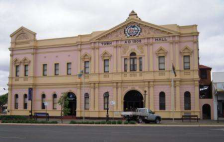
https://www.triphobo.com/places/kalgoorlie-australia/kalgoorlie-boulder-town-hall
Kalgoorlie Tours And Charters - Day Tours
Kalgoorlie Tours & Charters - Day Tours is a tourism package available on all days except Sunday. The tour starts at 9.30am and is for 3 hours. It is a guided tour with commentary, with access to the open pits and mining operation. All the gold mining processes are shown and what makes it more enjoyable is the comfortable trip though air conditioned buses. Meals and hotel transfers are included as well for visitor’s benefits.
https://www.triphobo.com/places/kalgoorlie-australia/kalgoorlie-tours-and-charters-day-tours
Beaten Track Brewery
The Beaten Track Brewery brews locally made beer in the Kalgoorlie Boulder. The visitors are served with beer, in their purest form that too with a great variety of flavors to choose from .Some of them are Australian Rye, English India, Seasonal Ale, Australian Wheat Beer, etc. It is open to all from Mondays to Saturdays from 1pm to 6pm and due to have trading license imposed on them, bookings are to be made in advance.
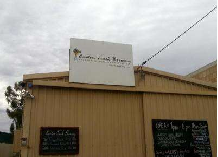
https://www.triphobo.com/places/kalgoorlie-australia/beaten-track-brewery
Goldrush Tours - Day Tours
The Goldrush Tour started in 1973. Within the span of 40 years; it managed to become the largest private owned coach company in Western Australia. They provide five star luxury coaches and midsized tour buses which can fit in groups of any size. There are a lot in the itinerary which makes the tourists interested to opt for it. They can take about 1500 people at one time and show the Goldfield in detail.

https://www.triphobo.com/places/kalgoorlie-australia/goldrush-tours-day-tours
Kalgoorlie Walking Tour
The Kalgoorlie Walking Tours take the tourists through different sites out and about the Kalgoorlie City Center. It usually consists 35 attractions tour. These are inclusive of Heritage Buildings and Hotels, the WA School of Mines, Statues, WA Museum, Town Hall, and the Questa Casa bordello. The service is offered for $12 per person and is an enjoyable experience. The visitors also get Souvenir Map and information booklets to take back memories in them.
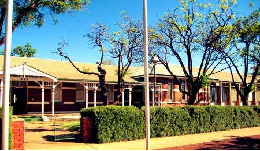
https://www.triphobo.com/places/kalgoorlie-australia/kalgoorlie-walking-tour
Boorabbin National Park
Boorabbun National Park in Western Australia lies between Coolgardie and Southern Cross. The park derived its name from an aboriginal named rock which is located at the edge of the area and the settlers were called of the same name too. The landscape is made up of both sand and vegetation and the former has been depositing here from the past 50 million years. But despite of having very little vegetation, the tourists are likely to find kwongan heaths, woodlands and mallee shrublands.
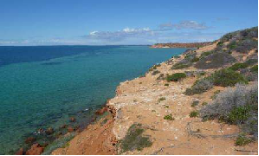
https://www.triphobo.com/places/kalgoorlie-australia/boorabbin-national-park
Goongarrie National Park
Goongarrie National Park is a part of the Goongarrie station which had been purchased by the state government in the year 1995. The abandoned town site of Goongarie is also included within the territory and the name of the place has been derived from a lake nearby. The park had been upgraded with a fund from government of $ 70,000 in 2007. It is located by the line of mulga-eucalypt. The visitors would enjoy seeing the different forms of vegetation through the park, along with small lakes and clay pans.

https://www.triphobo.com/places/kalgoorlie-australia/goongarrie-national-park
Questa Casa
Questa Casa in Kalgoorlie is Australia’s oldest working brothel and has been in operation since 1904. This place is also known as ‘The Pink House’ and is the only remaining brothel from Kalgoorlie's gold rush era. Featuring the famous ‘Starting Stalls,’ the girls here throw the door open at night from where they first talk to the gentleman. Questa Casa also offers guided tour lasts approximately 1 hour and 15 minutes. Visitors planning to visit must make a note that anyone under the age of 18 is not allowed in this brothel.
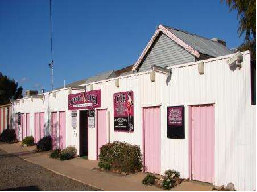
https://www.triphobo.com/places/kalgoorlie-australia/questa-casa
Kalgoorlie Golf Course
Kalgoorlie Golf Course is a premier 18-hole grass golf course that was designed by designer Graham Marsh and is one of the top 20 golf courses in Australia. Open to the public, this course is home to the Goldfields Golf Club. The club also has a fully stocked shop with golfing equipment of labels like Srixon, Cleveland, Ping, Bridgestone, Greg Norman, Sports Leisure and many more.
https://www.triphobo.com/places/kalgoorlie-australia/kalgoorlie-golf-course
Super Pit
Super Pit, also called the Fimiston Open Pit, was Australia's largest open cut gold mine until 2016. The Super Pit is located off the Goldfields Highway on the south-east edge of Kalgoorlie, just 8 kilometres from the town. At 3.5 kilometres long, the pit is oblong in shape and is 1.5 kilometres wide and over 600 meters deep, so large that it can be seen from the space. Originally this place had several small underground mines which were later consolidated into one open pit by Alan Bond and the Super Pit was eventually created in 1989. Most of the gold ore found here is formed of the Golden Mile Dolerite. The mine also has a nickel.

https://www.triphobo.com/places/fimiston-australia/super-pit
Kalgoorlie Boulder Visitor Centre
The Kalgoorlie Boulder Visitor Centre on Hannan Street in Kalgoorlie is your one-stop-shop for your guide to the Goldfields. This fully accredited, the non-for-profit visitor centre has an award-winning team that will help you with accommodation, tours, attractions, art & culture, maps & trails, food, and retail in the Eastern Goldfields region.

https://www.triphobo.com/places/kalgoorlie-australia/kalgoorlie-boulder-pure-gold
Hannans North Tourist Mine
A visit to Kalgoorlie is not complete without a visit to Hannans North Tourist Mine! Gold Mining in Kalgoorlie dates back to June 1893 when Paddy Hannan, Thomas Flanagan, and Dan Shea first found alluvial gold here. This led to the Western Australian gold rush and led to Kalgoorlie’s gold rush. The Hainault mine opened to visitors in 1972 and included underground tours and rock drilling demonstrations, making this one of the top things to do in Kalgoorlie.
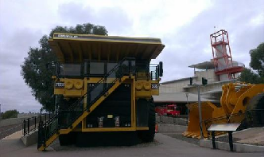
https://www.triphobo.com/places/kalgoorlie-australia/hannans-north-tourist-mine
Hammond Park
The Hammond Park is one of the best family-friendly attractions in Kalgoorlie. A lush green oasis in the middle of the outback mining, the Hammond Park has a range of activities for everyone to enjoy. Hammond Park is home to many native birds and animals like kangaroos, emus, and peacocks. Apart from this, the Hammond Park is also home to a miniature Bavarian Castle that is said to have 40,000 gemstones decorating its facade.
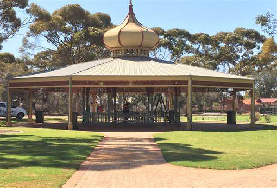
https://www.triphobo.com/places/kalgoorlie-australia/hammond-park
Karlkurla Bushland Park
The Karlkurla Bushland Park is made up of 200 hectares of natural regrowth bushland. Apart from this, the park also houses 2,000 trees and shrubs that have been planted by the community volunteers. The park has a 4-kilometre walking trail will treat you to the views of Silky Pear, which is one of the many native bushes here. The park is open 24 hours but does not allow camping.

https://www.triphobo.com/places/kalgoorlie-australia/karlkurla-bushland-park
Mount Charlotte Reservoir And Lookout
The Mount Charlotte Reservoir and Lookout is a nature preserve in Williamstown, just 2 kilometres outside Kalgoorlie and across Goldfields Highway. Complete with many hiking trails and a lot of nature-related activities, a hike up Mount Charlotte is one of the best things to do in Kalgoorlie. From the top, you can enjoy fantastic views of the City of Kalgoorlie Boulder. This site is also water terminus for water that is piped Mundaring Weir in Perth to the Goldfields.
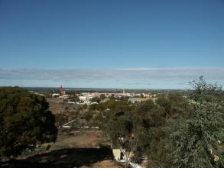
https://www.triphobo.com/places/kalgoorlie-australia/mount-charlotte-reservoir-and-lookout
Museum Of The Goldfields
The Museum of the Goldfields is located in the Australian town of Kalgoorlie and is one of the most visited attractions here, thanks to its impressive array of permanent and temporary exhibitions. Showcasing the rich history and city’s mining heritage through its many artefacts, restored miners' quarters and a panoramic derrick, the Museum of the Goldfields also lets you understand how the prospectors searched for the gold back in time. This museum also features the State’s collection of gold bars and nuggets.
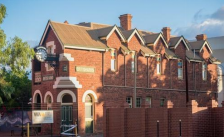
https://www.triphobo.com/places/kalgoorlie-australia/museum-of-the-goldfields
Kanowna
Kanowna is known to be a ghost town in the Goldfields region. The discovery of gold in this area took place during 1893 and population started increasing thereafter. But slowly the gold mines started getting exhausted. The town was abandoned by 1953 after the Great Depression. The original town was just left with the station platform, two cemeteries and the mine. It is popular for its history and there are many significant buildings that define them.
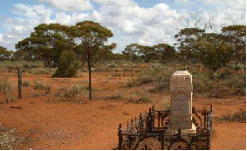
https://www.triphobo.com/places/kalgoorlie-australia/kanowna
VI. History and Culture
The history of Kalgoorlie dates back to 1893 when three gold prospectors, one of them being Patrick Hannan, had to stop to tend to their horses when they came across several gold nuggets. News of the find spread like wild fire and soon people from all around came to claim their stakes in one of Australia’s fastest growing gold rush towns, Kalgoorlie. The site at this time was located 40km east of Coolgardie and was deserted until gold was discovered which saw building constructed and soon a small town seemed to emerge and was eventually named Kalgoorlie. It was originally spelt Calgoorlie but the ‘C’ was changed to a ‘K’ to saved confusion to the closely located town of Coolgardie. Until the government officially named the town Kalgoorlie which was in significance to the local Aboriginal name Coolgoorlie, the locals new it as Hannan’s Find. Two explorers by the name of C.C Hunt and H.M Lefroy did explore the area looking for pastoral lands back in 1860’s but it wasn’t until the find of gold did people start to flock to the region.
700 miners made their way to Kalgoorlie back in the days of the gold rush but 1894 the miners were becoming discouraged by the lack of finds that were being made in the area. Back in those days it was strongly believed that quartz was the rock to most likely hold gold within it but when the Canadian miner, Larry Cammilleri discovered this to be untrue miners travelled on south to new prospecting mines. This is where the town of Boulder was soon developed and the Boulder Fault saw many miners profit from this region. The Golden Mile as it was appropriately named years later held a deep golden reef that was slowly being uncovered.
With more and more people flocking to Kalgoorlie and Boulder to claim their lands and stacks in the gold finds a railway was soon constructed from Perth through to Boulder and was completed in 1902. Streets where being built and establishments such as hotels, breweries, brothels and more were all being constructed and can still be seen to this very day in Kalgoorlie-Boulder. With the building of the railway track saw a steady increase in the population which in turn saw the construction of a pipeline that would run 563km from the weir in Mundaring to a reservoir in Kalgoorlie and was managed by Engineer-in-chief Charles Yelverton O’Connor. Water was greatly needed and until the development of the pipeline in 1903 many health problems kept arising. Kalgoorlie-Boulder survived because of the pipeline that Charles O’Connor had built but unfortunately due to the pressures of the job, he did not get to see the completion as he committed suicide in 1902.
The town from this point on took many hits, one with the steady decline in the population due to WWII, the rising costs on the mining industry and then in 1934 race riots hit Kalgoorlie as many upset Australian hit back as businesses in both Kalgoorlie and Boulder that were run and owned by foreigners. Over the years businesses came and fell but then in 1989 the two cities of Kalgoorlie and Boulder were joined to become one. To this day many old buildings and museums tell the stories from the olden days and history that surrounds Kalgoorlie and you can wander through many attractions that hold many interesting tales from the gold rush days. Kalgoorlie is still a mining town but the progress of the city is helped by the steady and growing pastoral industry in the area as well as tourism. 35,000 people call Kalgoorlie home today and it is the biggest and most prosperous gold mining city in Australia and continues to play an integral role in the wealth and economy of Australia’s gold mining industry.
http://www.watravel.com.au/kalgoorlie/kalgoorlie-history.html
The first Europeans to explore the Kalgoorlie-Boulder area were H.M. Lefroy and C.C. Hunt who were searching for viable pastoral lands in the 1860s. By the early 1890s the goldfields of the state's north-west were becoming less viable and the state government offered a reward for fresh discoveries. Attention was drawn to the state's south-east when Arthur Bayley discovered gold near Coolgardie in 1892. The following year Paddy Hannan, Tom Flanagan and Daniel Shea discovered alluvial gold nuggets near Mount Charlotte when they were forced to camp out unexpectedly after their horse lost a shoe.
On 17 June 1893 Paddy Hannan (in the early days the town was simply named Hannan's or Hannan's Find) registered his claim and, within three days, an estimated 700 men were prospecting in the area. This was the goldrush to beat all goldrushes. In comparison to what would eventually become known as 'the richest goldfield in the world' all other Western Australian finds paled in comparison. It was the goldrush which suggested to potential prospectors that a few weeks of hardship could be rewarded with a lifetime of untold affluence.
In effect, Hannan's find drew attention to an area which was home to an ore body that later became known simply as the 'Golden Mile'. Hannan's claim was not part of this reef. It was miners, forced to move further south, who stumbled upon this lode. Central to the discovery were a South Australian syndicate who, hearing the news of the gold around Kalgoorlie, moved from a settlement called Boulder, taking the old name with them to their new mining operation.
By the end of 1893 over 100 leases had been taken out in the Kalgoorlie-Boulder area. The great challenge of the area was that the local quartz deposits, which are usually accepted as the rocks most likely to contain gold, did not produce high yields. In fact by 1894 the results from mining these quartz reefs were so disappointing that the field began to experience a small depression. Investors were less than enthusiastic and returns were not what had been hoped for.
It was a Canadian miner, Larry Cammilleri, who discovered that the quartz in the area was not carrying most of the gold. Years later he recalled: 'I sank on the leader and where she junctioned with the lode material she carried nice gold. I dollied some ounces. I found that the lode matter carried a little gold so started a shaft. This shaft led me to be the first to discover what later proved to be the lode matter which made the Golden Mile famous. The lode was composed of ironstone, with small quartz veins, greenstone, diorite and porphyry, all decomposed in the shallow workings.'
Others, including Paddy Hannan, were sceptical about Cammilleri's discovery but Cammilleri replied with the old Cornish saying 'where it is, there it is'. At first, the lack of good gold-yielding quartz in the area continued to keep investors away. It was not until the establishment of the first battery, on 10 April 1894, and some of its early yields (2008 tons of ore from the Great Boulder Mine yielded 15 000 ounces of gold) that confidence was restored in the field.
In his book In Search of El Dorado the Scottish writer Alexander Macdonald gives a description of Kalgoorlie at this time:
'When my party stepped from the train at Kalgoorlie, we saw before us a scattered array of wooden and galvanised iron houses...In the near distance we could see the towering poppet heads of the widely known Great Boulder mine, and the din created by the revolving hammers of the ever active stamping machinery assailed our ears as an indescribable uproar. But beyond the dust and smoke of these Nature-combatting engines of civilisation, the open desert, dotted with its stunted mulga and mallee growths, shimmered back into the horizon.'
As with all of the gold mining towns progress was almost instantaneous. The first post office was established in 1894. The following year the town was surveyed and proclaimed while some entrepreneur provided the new settlement with a daily newspaper. The railway arrived in 1896.
By 1897 the population in the area had grown so rapidly that two towns had been established: Kalgoorlie (it probably comes from the Aboriginal word 'karlkurlah' meaning 'silky pear' which was a common plant along the Boulder ridge) and Boulder which was declared in August 1897 when miner's shacks and tents were moved to be closer to their workplace around the Great Boulder Mine.
Kalgoorlie peaked in the early years of this century with an estimated 93 hotels, 8 breweries and a population of 30 000 people. By 1903 the School of Mines had been established and the town had fresh water from Mundaring Weir in Perth.
The story of the remarkable 563-km pipeline, which brought water from Perth to the parched desert around Kalgoorlie (the average annual rainfall is only 252 mm per annum), is really the sad story of a man of remarkable vision who was destroyed by public cynicism.
Charles Yelverton O'Connor was born in Ireland in 1843. He emigrated to New Zealand in 1865 and moved to Western Australia where he was employed as the engineer-in-chief, in 1891. His major projects were to be the state's railways, the establishment of Fremantle harbour, and, as far as the goldfields were concerned, the construction of the water pipeline from Mundaring to Coolgardie and Kalgoorlie. O'Connor initiated the plan in 1895 but it was violently opposed in parliament and the approval to start work wasn't granted until 1898. Even when the project was underway its critics, believing it to be impractical, did not relent. O'Connor was subjected to a particularly vicious press campaign. He committed suicide in March 1902, partly as a result of the pressures, and his suicide note included detailed instructions on the construction of the pipeline, which was completed the following year. The result was that vast areas of the wheatbelt and the Eastern Goldfields, which had been relying on unreliable wells, waterholes and condensers, suddenly found that they had regular supplies of water. The pipeline assured the survival of Kalgoorlie and Boulder.
The city centres, which were built at this time, are still largely intact. Hannan Street in Kalgoorlie and Burt Street in Boulder are thick with gracious buildings which announce that here are two centres built on the wealth of gold. By 1910, both were thriving inland cities with fresh water, electricity, a tramline running up Hannan Street, and every possible comfort for men who worked hard for very rich rewards.
It is one of the sad ironies of Kalgoorlie-Boulder that the men who found the 'Golden Mile' which has sustained the city for nearly a century did not reap great benefits from their find. Tom Flanagan died in Bendigo in 1900 leaving no great wealth, Daniel Shea died in 1908 having continued to prospect for new fields up to 1904, and Paddy Hannan, the father of the whole area, made some money from his find but never become massively wealthy.
However, for the goldminers and the settlers of Kalgoorlie, Hannan became a symbol of the battler who struck it rich. They called their main street after him, the local club was The Hannan's Club, even one of the locally brewed beers was Hannan's beer. To some oldtimers the town was never Kalgoorlie but only Hannan's Find or, more simply, Hannan's.
In 1904, at the age of sixty-one, having prospected for all his adult life, Hannan was granted a pension of £100 by the Western Australian Government. It was increased to £125 and by 1911 had risen to £150. He retired to Fallon Street, Brunswick, Victoria, where he lived until his death on 4 November 1925.
Today there are still about 50 mines operating in the goldfields district. About half of those are gold mines, including the massive Super Pit, which exploits the most productive square mile of gold-bearing ore ever discovered anywhere in the world. Nickel, chrysoprase, copper, granite, lime, salt, sand and silver are also the focus of industrial interest.
Boulder hosts the unusual Undies 500 Car Rally every year, on the third Sunday in February. All participants must compete covered only by their underwear. There is also a market at Boulder on the third Sunday of each month.
https://www.traveller.com.au/kalgoorlie--culture-and-history-6f1s
VII. Contact Information
Mayor John Bowler
Deputy Mayor Lisa Malicky
https://www.ckb.wa.gov.au/Council
